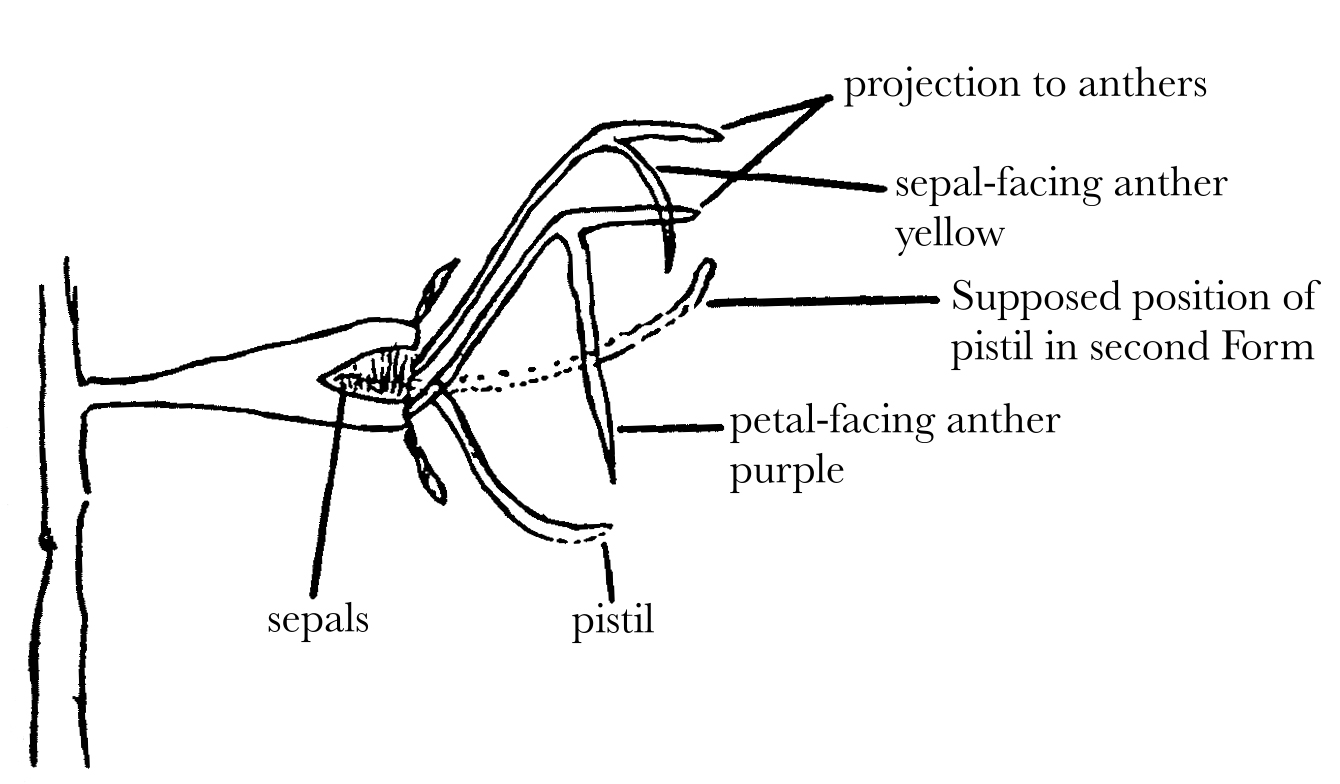To Asa Gray 16 February [1862]1
Down Bromley Kent
Feb. 16th
My dear Gray
I have been trying a few experiments on Melastomatads;2 & they seem to indicate that the pollen of the two curious sets of anthers (ie the petal-facers & the sepal-facers) have very different powers; & it does not seem that the difference is connected with any tendency to abortion in the one set.— Now I think I can understand the structure of flower & means of fertilisation, if there be two forms,—one with the pistil bent rectangularly out of the flower, & the other with it nearly straight. Study the enclosed magnificent diagram!3 Our hot-house & green-house plants have probably all descended by cuttings from a single plant of each species; so I can make out nothing from them. I applied in vain to Bentham & Hooker;4 but Oliver picked out some sentences from Naudin, which seem to indicate differences in the position of the pistil.5
I see that Rhexia grows in Massachusetts; & I suppose has two different sets of stamens. Now, if in your power, would you observe the position of the pistil in different plants, in lately-opened flowers of the same age (I specify this because in Monochætum I find great changes of position in the pistils & stamens, as flower gets old).6 Supposing that my prophecy should turn out right, please observe whether in both forms the passage into the flower is not in the upper side of the pistil, owing to the basal part of the pistil lying close to the ring of filaments on the under side of the flower.— Also I should like to know the colour of the two sets of anthers.—7
This would take you only a few Minutes & is the only way I see that I can find out whether these plants are dimorphic in this peculiar way, i.e. only in the position of the pistil & in its relation to the two kinds of pollen.— I am anxious about this, because if it should prove so, it will show that all plants with longer & shorter or otherwise different anthers, will have to be examined for dimorphism.—
Will you keep this note as a memorandum? You see that I do not scruple to trouble you.— I am tired tonight, so will write on no other subject.—
Ever yours most truly | C. Darwin
[Enclosure]
Corolla removed One stamen of each kind alone represented
 (The yellow anthers give far more seed than the purple anthers.)8
(The yellow anthers give far more seed than the purple anthers.)8
Footnotes
Bibliography
Correspondence: The correspondence of Charles Darwin. Edited by Frederick Burkhardt et al. 29 vols to date. Cambridge: Cambridge University Press. 1985–.
Summary
Floral structure of Melastoma. Asks AG to observe position of pistils in lately-opened flowers of different plants.
Letter details
- Letter no.
- DCP-LETT-3448
- From
- Charles Robert Darwin
- To
- Asa Gray
- Sent from
- Down
- Source of text
- Gray Herbarium of Harvard University (63)
- Physical description
- ALS 4pp diag
Please cite as
Darwin Correspondence Project, “Letter no. 3448,” accessed on
Also published in The Correspondence of Charles Darwin, vol. 10


